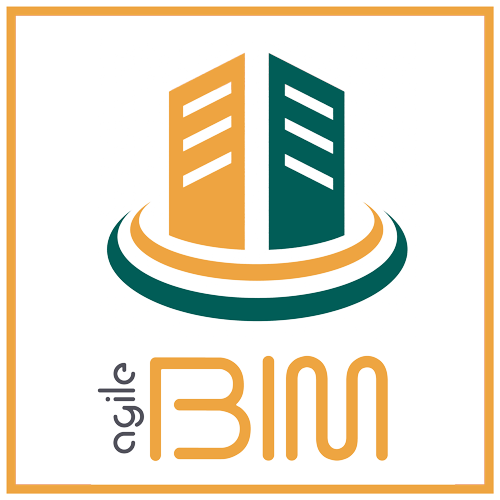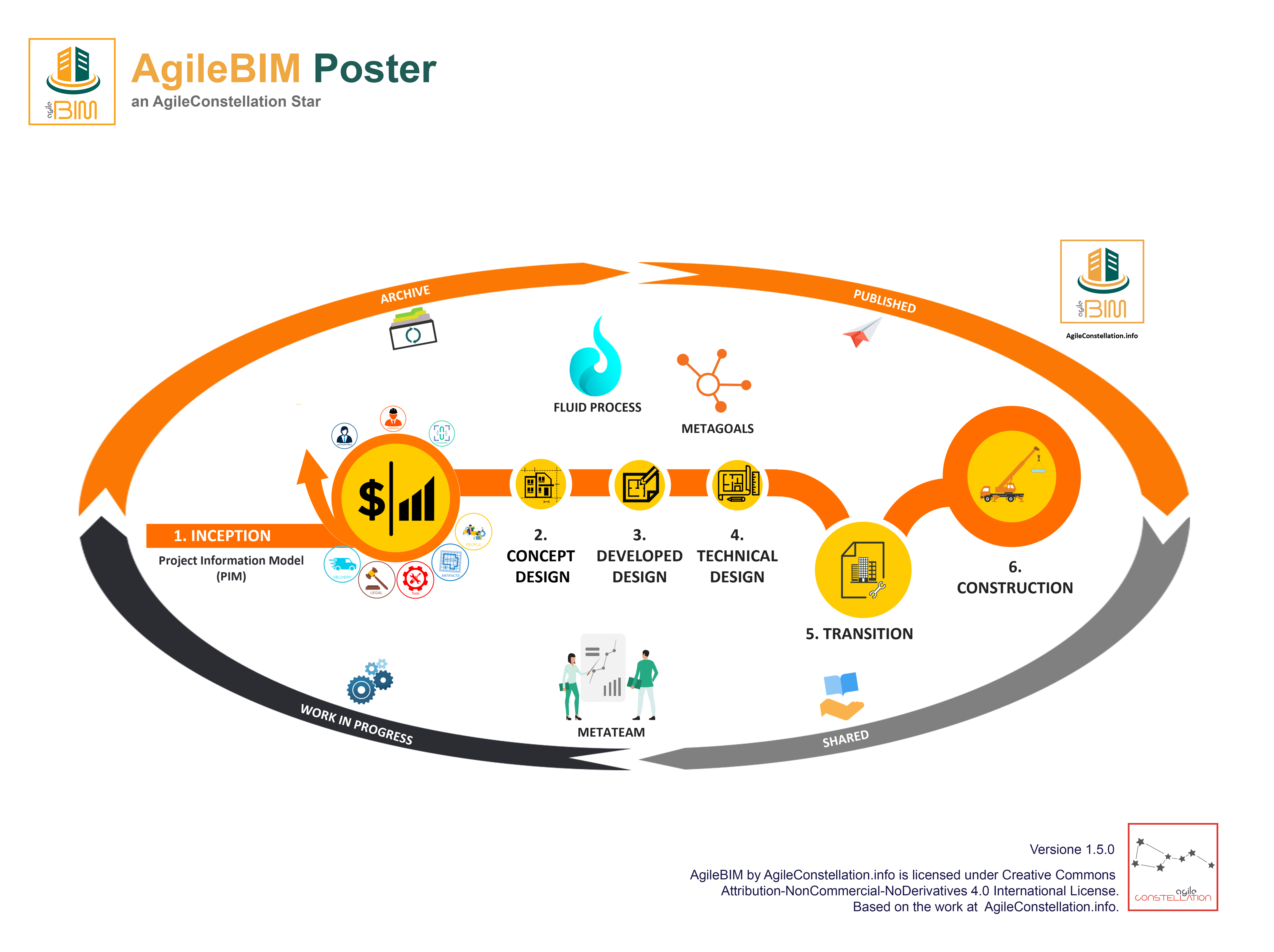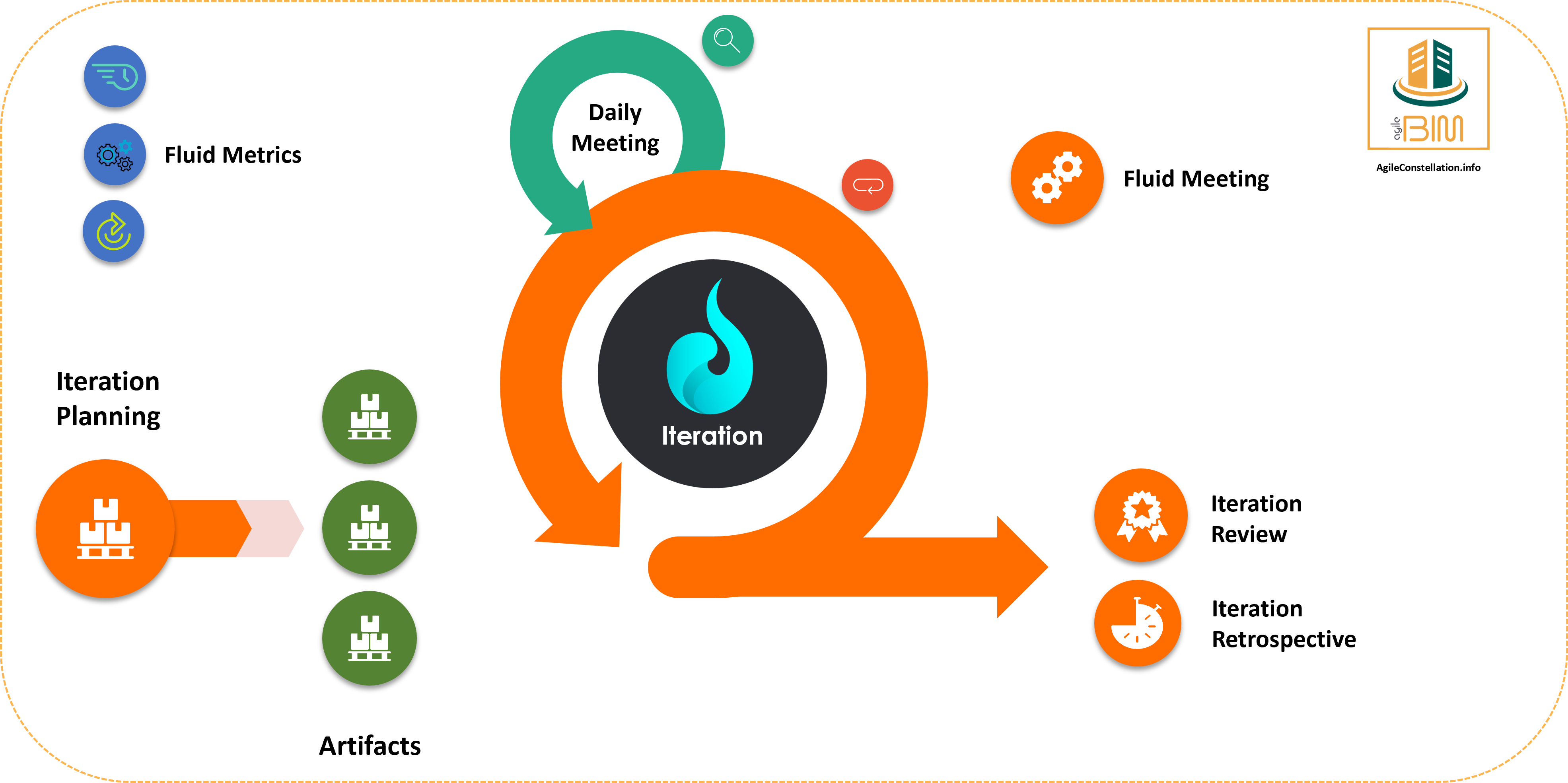
The construction world is characterized by a linear lifecycle, in which there are a series of well-established phases, declined in relation to the specific regulatory context, which can be schematized as follows: Designand Bidding, Pre-construction, Procurement, Execution, Commissioning & Owner Occupation, Project Closeout.
Moreover, even before the Design & Bidding phase, there is often a Conceptualization phase, useful to begin to “probe” the expectations of the customer. At first glance, this process is difficult to change, not least because one certainly cannot think of building the roof of a dwelling unless the foundations and the different characterizing plans have been built.
This aspect suggests dealing with Agile in the world of construction by thinking about two operational momentsof reference, Design and Construction, which are declined on specific (meta) phases supported by a series of workflows and operative practices that give life to the AgileBIM toolkit.
In accordance with the AgileConstellation modular approach, the AgileBIM "star” adds 3 new domain bubbles to validate the sustainability of the solution: Authorities, Contractors and Constraints.
The AgileBIM Poster highlights how the operational heart of the toolkit is focused on a series of operational phases: Inception, PFTE (Economic & Technical Feasibility), Technical Design, Transition, Build, structurally supported by the Common Data Environment (CDE) required by the reference legislation for BIM. Thanks to the CDE, it is possible to collect, manage and exchange the model, non-graphic data and documentation, facilitating collaboration and helping to avoid duplication and errors.
The phases are grouped into the Design and Construction Metaphases, to which the homonymous teams belong.
During Metaphase di Design, consisting of the first 4 phases, the Design Team uses the Fluid Process to create the work in an iterative and incremental way, allowing the customer to "immerse" himself in it (also through mixed reality tools) and suggest/ask for changes through targeted and timely feedback.
In the Construction Metaphase, consisting of the Build phase and entrusted to a specific Construction Team, Lean Manufacturing and the Last Planner System are used to develop effective communication, and constant alignment, between all the professionals involved, promoting adaptive governance, thanks also to tools that enable a rapid and updated view of the progress of the works.
Although two specific metaphases are identified, as well as their constituent phases, it is essential to maintain a management approach, and where possible operational, guided by a system logic (system thinking), without falling into the trap of local optimization. At the basis of this aspect there is the ability to identify appropriate operational workflows, in the specific implementation phases, supported by multidisciplinary teams (Architect, Structural Engineer, Plant Engineer, etc.) able to carry out all the activities required for the development of the various documents. The digital model (digital twin), thus obtained, is passed on to the Construction (meta) team which, by exploiting more Lean oriented operating models, can make the actual construction activities of the work more efficient.
The aforementioned Fluid Process finds its basis in the hybrid scrumban approach and takes the form of the following flow:
In it, the holistic vision is raced thanks to the Project Manager (PM), using Hikai Management and supporting the different metateams and professionals in the specific metaphases, and the AgileBIM Coach, whose focus is on taking metateams in the adoption of AgileBIM, stimulates it in the continuous experiment of new improvementoptions, both approach and product.
AgileBIM, in short, allows to obtain concrete benefits, among which are highlighted:
-
- Greater and more organizational flexibility, thanks to tools that encourage communication and transparency.
- Improved operational efficiency, being the project divided into a series of works and artifacts made by a multidisciplinary metateam.
- Simplified management of dependencies, thanks to an integrated development between the different metaphases and the different actors involved.
- Increased predictability, thanks to the use of effective metrics for continuous improvement.
- Reduction of delays, thanks to a focus on value activities and their timed management in relation to the processing phases.
- Customer satisfaction, thanks to a constant alignment able to generate quick and timely feedback.






